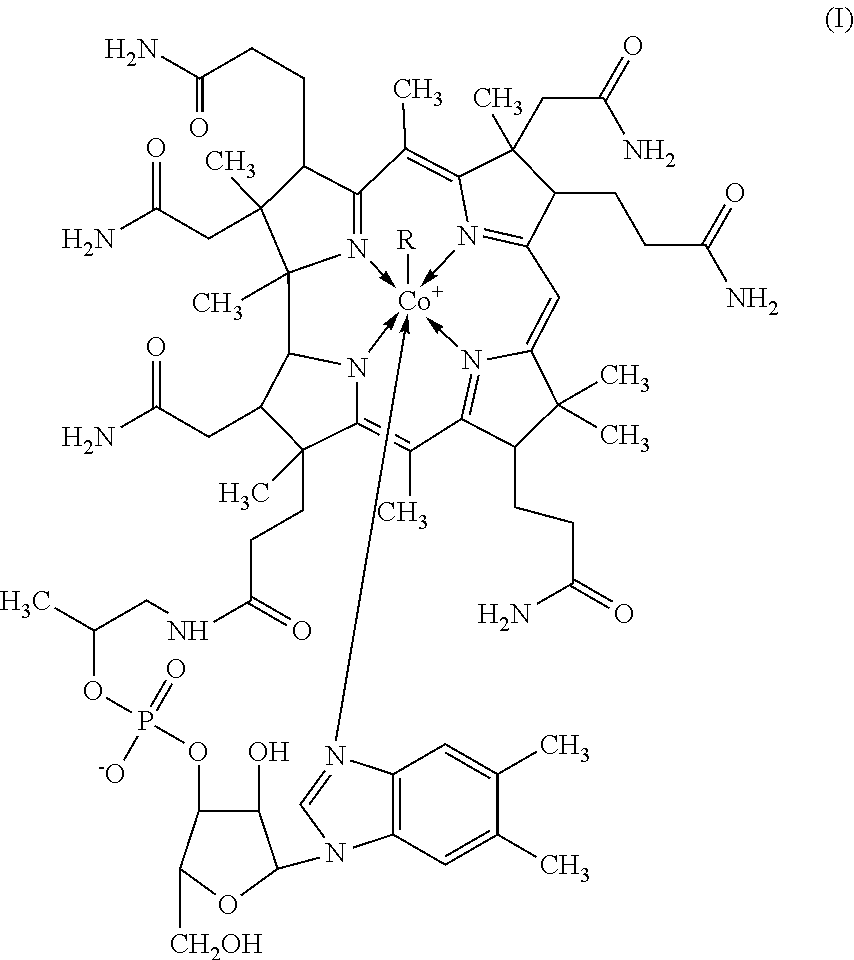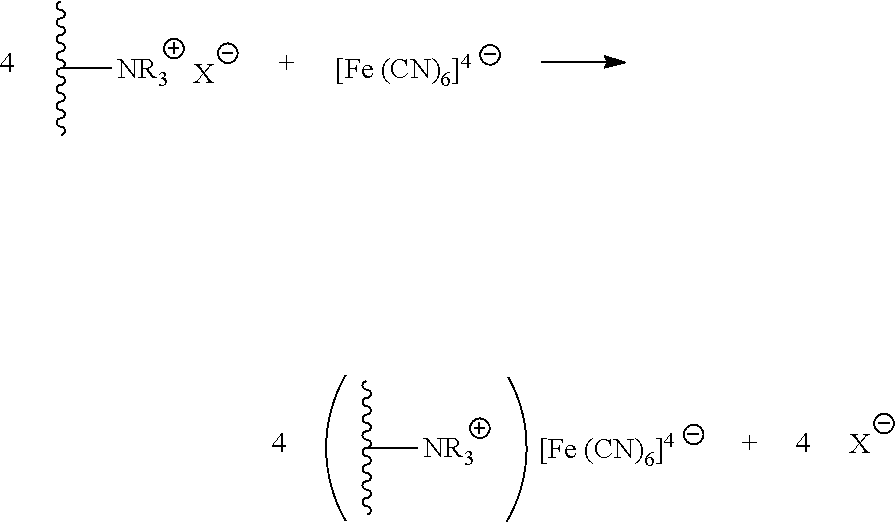Process for the purification of methylcobalamin
a technology of methylcobalamin and purification process, which is applied in the field of purification process of methylcobalamin, can solve the problems of lowering the overall reaction yield of the process, iron residues in the final pharmaceutical substance, and consequently in the final drug product, and it is difficult to obtain methylcobalamin with iron content within the limits recommended by the regulatory agencies for metal residues
- Summary
- Abstract
- Description
- Claims
- Application Information
AI Technical Summary
Benefits of technology
Problems solved by technology
Method used
Image
Examples
example 1
ion Process According to the Invention
a) Reductive Methylation of Cyanocobalamin
[0082]To a stirred mixture of 20 Kg of cyanocobalamin, 0.68 Kg of iron (II) sulphate heptahydrate and 1.77 Kg of 30% aqueous solution of iron (III) chloride in 10 L of methyl ethyl ketone and 260 L of deionized water, at 30-40° C., in inert atmosphere and red light, were added simultaneously over a period of 3 h a solution of 8 Kg of sodium borohydride and 0.16 Kg of aqueous solution of sodium hydroxide in 40 L of deionized water, and 14 L of methyl ethyl ketone. After stirring 30 min at the same temperature, a solution of 7.5 kg of trimethylsulfoxonium bromide in 40 L of deionized water was added over a period of 1 h. After stirring for 3 h at the same temperature, the mixture was cooled to 10° C. and 15 L of methyl ethyl ketone were added, the mixture was stirred for 12 h at the same temperature. The precipitated product was filtered and washed with 100 L of methyl ethyl ketone and 100 L of acetone.
b) ...
example 2
ve Example
[0086]To a stirred mixture of 20 Kg of cyanocobalamin, 0.68 Kg of iron (II) sulphate heptahydrate and 1.77 Kg of 30% aqueous solution of iron (III) chloride in 10 L of methyl ethyl ketone and 260 L of deionized water, at 30-40° C., in inert atmosphere and red light, were added simultaneously over a period of 3 h a solution of 8 Kg of sodium borohydride and 0.16 Kg of aqueous solution of sodium hydroxide in 40 L of deionized water, and 14 L of methyl ethyl ketone. After stirring 30 min at the same temperature, a solution of 7.5 kg of trimethylsulfoxonium bromide in 40 L of deionized water was added over a period of 1 h. After stirring for 3 h at the same temperature, the mixture was cooled to 10° C. and 15 L of methyl ethyl ketone were added, the mixture was stirred for 12 h at the same temperature. The precipitated product was filtered and washed with 100 L of methyl ethyl ketone and 100 L of acetone. The solid was treated with 260 L of 50% acetone aqueous solution, warmed...
example 3
ent Comparison
[0090]The following table shows the comparison of iron content of methylcobalamin obtained using the method of the present invention for purifying the methylcobalamin obtained after reductive methylation in presence of iron (II) (Example 1, batches A, B and C), and the iron content of methylcobalamin prepared by an analogous method, but without the purification method of the present invention (Comparative example, batches 1 and 2):
ExampleYield (%)Fe (ppm)Example 1 (batch A)83.5Example 1 (batch B)84.471Example 1 (batch C)87.9Comparative example (batch 1)84.3494Comparative example (batch 2)86.71594
PUM
| Property | Measurement | Unit |
|---|---|---|
| time | aaaaa | aaaaa |
| time | aaaaa | aaaaa |
| temperature | aaaaa | aaaaa |
Abstract
Description
Claims
Application Information
 Login to View More
Login to View More - R&D
- Intellectual Property
- Life Sciences
- Materials
- Tech Scout
- Unparalleled Data Quality
- Higher Quality Content
- 60% Fewer Hallucinations
Browse by: Latest US Patents, China's latest patents, Technical Efficacy Thesaurus, Application Domain, Technology Topic, Popular Technical Reports.
© 2025 PatSnap. All rights reserved.Legal|Privacy policy|Modern Slavery Act Transparency Statement|Sitemap|About US| Contact US: help@patsnap.com



